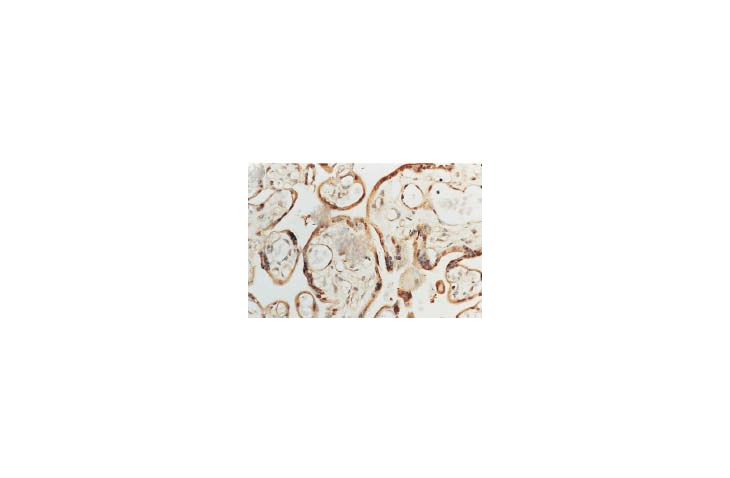Legenda image
Rabbit Anti-SOD1 Antibody used in IHC on Human Placenta (SPC-116)
Product description
Superoxide dismutase (SOD) is an endogenously produced intracellular enzyme present in almost every cell in the body (3). It works by catalyzing the dismutation of the superoxide radical O2? to O2 and H2O2, which are then metabolized to H2O and O2 by catalase and glutathione peroxidase (2,5). In general, SODs play a major role in antioxidant defense mechanisms (4).
There are two main types of SOD in mammalian cells. One form (SOD1) contains Cu and Zn ions as a homodimer and exists in the cytoplasm. The two subunits of 16 kDa each are linked by two cysteines forming an intra-subunit disulphide bridge (3). The second form (SOD2) is a manganese containing enzyme and resides in the mitochondrial matrix. It is a homotetramer of 80 kDa. The third form (SOD3 or EC-SOD) is like SOD1 in that it contains Cu and Zn ions, however it is distinct in that it is a homotetramer, with a mass of 30 kDA and it exists only in the extra-cellular space (7). SOD3 can also be distinguished by its heparin-binding capacity (1).
Specifications
Applications
IP, IHC, WB, ELISA
Host
Rabbit
Clonality
Polyclonal
Supplier
Stressmarq
Shipping & storage
Shipping condition
Blue Ice
Storage temperature
2-8°C
Do you have any questions about this product?
Order your product by email
Productname
SOD (Cu/Zn) Antibody: HRP
SPC-116D-HRP
By filling out this form, you are placing an order by e-mail. You will receive an order confirmation within one working day. The order cannot be modified after receipt of the order confirmation.
Request a sample
Productname
SOD (Cu/Zn) Antibody: HRP
SPC-116D-HRP
By filling out this form, you request a sample. You will receive an order confirmation within one working day. The order cannot be modified after receipt of the order confirmation.
Are you looking for specific products, alternatives or documentation?











